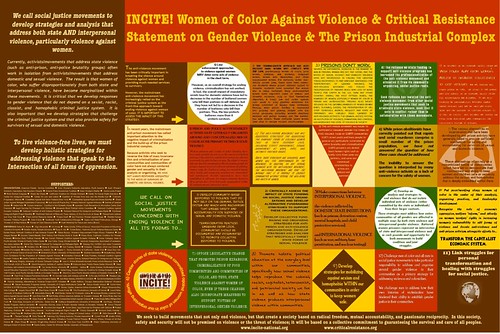Got the heads up on this NYT article from the UNSHACKLE List-serve. They are worth subscribing to. I'll follow up with what's happening regarding compassionate release in Arizona soon. Maybe these cases should be sent back to sentencing judges - I bet a lot would reconsider how much time they gave someone if they knew what the outcome would be - even judges in Arizona.
Law Has Little Effect on Early Release for Inmates
COXSACKIE, N.Y. — With his swollen legs and a throaty rasp that whistles like a kettle through his broken teeth, Eddie Jones is an unlikely man to make history.
He is 89 and dying, a former loan shark who, at 69, shot another man dead on a Harlem street in what he claimed was self-defense. Now he is serving a sentence of 25 years to life in a prison hospital bed in this upstate town, riddled with heart disease and probably cancer, though his doctors are not certain about the cancer because Mr. Jones has refused most every medical test.
Mr. Jones’s original parole date was in 2015, but he stands to go free in the coming weeks under a new state law that makes chronically as well as terminally ill inmates eligible for early release. Inmates must be deemed physically or cognitively unable to present a threat to society.
The law, passed with the state budget last April, expanded the eligibility list to add those convicted of violent crimes including second-degree murder (like Mr. Jones), first-degree manslaughter and sex offenses, so long as the ailing inmates have served half their time.
But despite fanfare within the corrections field about the humanitarian and financial benefits of compassionate release — New York is one of a dozen states that have expanded, enacted or streamlined programs over the past two years — the policy shift has had minimal effect. Experts attribute this to the fear that freed inmates, no matter how sick, might commit further crimes, as well as to the difficulty of placing dying criminals in nursing homes.
“The problem is, when we start trying to put people out, there are others in the community who are sure we’re trying to make more crime in the community,” said Dr. Lester Wright, chief medical officer for the New York State Department of Correctional Services. “We’re also competing for beds. Some people think my patients aren’t as valuable as other people in society.”
The embrace of compassionate release comes as the nation’s prison population is at a historic high — 1.6 million people as of 2008, according to the Justice Department — compounded by a surge in aging and sick inmates serving longer sentences. In 2008, there were 74,100 inmates age 55 and older, a 79 percent increase from 1999. New York estimates the cost of caring for a gravely ill inmate at $150,809 a year.
Once released, they are usually cared for by family members or placed in nursing homes or hospices, their expenses largely covered by Medicare or Medicaid.
But while the new state guidelines led to a rise in applications for medical parole — 202 inmates last year, compared with 66 in 2008 — they have hardly led to more releases. Mr. Jones would, in fact, be the first freed under the new guidelines (the seven inmates released last year were eligible under the old rules).
The National Conference of State Legislatures said 39 states had compassionate release programs, but many of them also have minimal impact.
In California, where federal judges ordered the state to cut the prison population by 40,000, three people were granted compassionate release last year. In Alabama, where prisons are at double their capacity, four sick inmates were let out on compassionate release in the 2009 fiscal year; 35 other prisoners in Alabama died while their applications were being reviewed.
Since New York adopted medical parole in 1992, at the height of the AIDS crisis, 364 people have been released.
“Medical parole was designed to consider the humanitarian needs of inmates as well as the safety of the community,” said Brian Fischer, commissioner of the State Department of Correctional Services. “Anybody can tell us they want medical parole, but the numbers who qualify are going to be a lot smaller than the ones who want it.”
Advocates for prisoners argue that fear of recidivism is unreasonable, especially for convicts close to death. Corrections officials said during the 18 years the program in New York has been in effect, three medically paroled inmates have ended up back in prison, none for violent crimes.
“Politicians and high-level officials and bureaucrats don’t want to be accused of being soft on crime, even if the prisoners are terminally ill and there’s no possible risk to public safety,” said Robert Gangi, executive director of the Correctional Association of New York, a prison advocacy group.
Indeed, the release last summer in Scotland of a sick Libyan man convicted in the bombing of an airplane over Lockerbie created an international furor. Last fall, anger over New York’s new law erupted when Gregory Felder, who was convicted of murdering a Radio Shack employee on Long Island in 2004 and is now gravely ill, was considered for parole. (He was turned down; and a legislative loophole that had made him eligible despite having not yet served half his sentence was subsequently closed.)
Other cases have unfolded far from the public glare. Cinderella Marrett, 74, who was caught at Kennedy International Airport in 2007 smuggling cocaine in her girdle — to offset medical expenses, her daughter said — was released in May 2009. Stricken with cancer, she is living in a nursing home in the Bronx.
Since 2005, at least 16 New York inmates have died while waiting for the parole board to decide their fate.
Timothy McGowan, a once-burly high school dropout from Deer Park, N.Y., spent half of his 50 years behind bars for 11 felony convictions, including robbery and second-degree manslaughter. By the time he was thrown back in prison for a parole violation in April 2009, cancer was consuming his lungs, whittling away his body and creeping up his brain stem.
In July, when Mr. McGowan could barely walk, his prison doctors applied on his behalf for compassionate release; his final wish was to have one last cup of tea with his mother in their Long Island home. Instead, he died at the Fishkill Correctional Facility on Nov. 7, two days before the parole board was to hear his case.
Among the prisoners in New York newly eligible but denied release last year was Sergio Black, 38, a former Marine who said he had fought in the first gulf war.
Mr. Black was convicted in 2005 of raping his former companion, which he denied. In 2006, his spinal cord was injured in a prison basketball game. Now a quadriplegic in the Walsh Regional Medical Unit of the Mohawk Correctional Facility in Rome, N.Y., Mr. Black is a “poster boy for medical parole,” according to his lawyer, Stephen Dratch, because it would be difficult for him to commit another physical crime. But the parole board rejected his application, saying Mr. Brown “exhibited little or no insight or remorse for the victim.”
Mr. Jones, the near-nonagenarian and former loan shark known by his hospice aides as the Harlem Knight, was supposed to go before the parole board in December, but the hearing was pushed back twice because the court had not yet sent a transcript from his sentencing. His next scheduled parole date is next month, and he remains bedridden in the hospice at the Coxsackie state prison.
A long-lost niece, Marcy Jones, who lives in Washington, has poured her heart into pushing corrections officials and the governor’s office to grant the parole. She is optimistic enough that she has bought her uncle a new wardrobe and has set up a battery of medical appointments for him.
“Once I get him out, I’m going to advocate for others,” Ms. Jones said. “There are other Uncle Eddies out there.”
-------------------
He is 89 and dying, a former loan shark who, at 69, shot another man dead on a Harlem street in what he claimed was self-defense. Now he is serving a sentence of 25 years to life in a prison hospital bed in this upstate town, riddled with heart disease and probably cancer, though his doctors are not certain about the cancer because Mr. Jones has refused most every medical test.
Mr. Jones’s original parole date was in 2015, but he stands to go free in the coming weeks under a new state law that makes chronically as well as terminally ill inmates eligible for early release. Inmates must be deemed physically or cognitively unable to present a threat to society.
The law, passed with the state budget last April, expanded the eligibility list to add those convicted of violent crimes including second-degree murder (like Mr. Jones), first-degree manslaughter and sex offenses, so long as the ailing inmates have served half their time.
But despite fanfare within the corrections field about the humanitarian and financial benefits of compassionate release — New York is one of a dozen states that have expanded, enacted or streamlined programs over the past two years — the policy shift has had minimal effect. Experts attribute this to the fear that freed inmates, no matter how sick, might commit further crimes, as well as to the difficulty of placing dying criminals in nursing homes.
“The problem is, when we start trying to put people out, there are others in the community who are sure we’re trying to make more crime in the community,” said Dr. Lester Wright, chief medical officer for the New York State Department of Correctional Services. “We’re also competing for beds. Some people think my patients aren’t as valuable as other people in society.”
The embrace of compassionate release comes as the nation’s prison population is at a historic high — 1.6 million people as of 2008, according to the Justice Department — compounded by a surge in aging and sick inmates serving longer sentences. In 2008, there were 74,100 inmates age 55 and older, a 79 percent increase from 1999. New York estimates the cost of caring for a gravely ill inmate at $150,809 a year.
Once released, they are usually cared for by family members or placed in nursing homes or hospices, their expenses largely covered by Medicare or Medicaid.
But while the new state guidelines led to a rise in applications for medical parole — 202 inmates last year, compared with 66 in 2008 — they have hardly led to more releases. Mr. Jones would, in fact, be the first freed under the new guidelines (the seven inmates released last year were eligible under the old rules).
The National Conference of State Legislatures said 39 states had compassionate release programs, but many of them also have minimal impact.
In California, where federal judges ordered the state to cut the prison population by 40,000, three people were granted compassionate release last year. In Alabama, where prisons are at double their capacity, four sick inmates were let out on compassionate release in the 2009 fiscal year; 35 other prisoners in Alabama died while their applications were being reviewed.
Since New York adopted medical parole in 1992, at the height of the AIDS crisis, 364 people have been released.
“Medical parole was designed to consider the humanitarian needs of inmates as well as the safety of the community,” said Brian Fischer, commissioner of the State Department of Correctional Services. “Anybody can tell us they want medical parole, but the numbers who qualify are going to be a lot smaller than the ones who want it.”
Advocates for prisoners argue that fear of recidivism is unreasonable, especially for convicts close to death. Corrections officials said during the 18 years the program in New York has been in effect, three medically paroled inmates have ended up back in prison, none for violent crimes.
“Politicians and high-level officials and bureaucrats don’t want to be accused of being soft on crime, even if the prisoners are terminally ill and there’s no possible risk to public safety,” said Robert Gangi, executive director of the Correctional Association of New York, a prison advocacy group.
Indeed, the release last summer in Scotland of a sick Libyan man convicted in the bombing of an airplane over Lockerbie created an international furor. Last fall, anger over New York’s new law erupted when Gregory Felder, who was convicted of murdering a Radio Shack employee on Long Island in 2004 and is now gravely ill, was considered for parole. (He was turned down; and a legislative loophole that had made him eligible despite having not yet served half his sentence was subsequently closed.)
Other cases have unfolded far from the public glare. Cinderella Marrett, 74, who was caught at Kennedy International Airport in 2007 smuggling cocaine in her girdle — to offset medical expenses, her daughter said — was released in May 2009. Stricken with cancer, she is living in a nursing home in the Bronx.
Since 2005, at least 16 New York inmates have died while waiting for the parole board to decide their fate.
Timothy McGowan, a once-burly high school dropout from Deer Park, N.Y., spent half of his 50 years behind bars for 11 felony convictions, including robbery and second-degree manslaughter. By the time he was thrown back in prison for a parole violation in April 2009, cancer was consuming his lungs, whittling away his body and creeping up his brain stem.
In July, when Mr. McGowan could barely walk, his prison doctors applied on his behalf for compassionate release; his final wish was to have one last cup of tea with his mother in their Long Island home. Instead, he died at the Fishkill Correctional Facility on Nov. 7, two days before the parole board was to hear his case.
Among the prisoners in New York newly eligible but denied release last year was Sergio Black, 38, a former Marine who said he had fought in the first gulf war.
Mr. Black was convicted in 2005 of raping his former companion, which he denied. In 2006, his spinal cord was injured in a prison basketball game. Now a quadriplegic in the Walsh Regional Medical Unit of the Mohawk Correctional Facility in Rome, N.Y., Mr. Black is a “poster boy for medical parole,” according to his lawyer, Stephen Dratch, because it would be difficult for him to commit another physical crime. But the parole board rejected his application, saying Mr. Brown “exhibited little or no insight or remorse for the victim.”
Mr. Jones, the near-nonagenarian and former loan shark known by his hospice aides as the Harlem Knight, was supposed to go before the parole board in December, but the hearing was pushed back twice because the court had not yet sent a transcript from his sentencing. His next scheduled parole date is next month, and he remains bedridden in the hospice at the Coxsackie state prison.
A long-lost niece, Marcy Jones, who lives in Washington, has poured her heart into pushing corrections officials and the governor’s office to grant the parole. She is optimistic enough that she has bought her uncle a new wardrobe and has set up a battery of medical appointments for him.
“Once I get him out, I’m going to advocate for others,” Ms. Jones said. “There are other Uncle Eddies out there.”























No comments:
Post a Comment